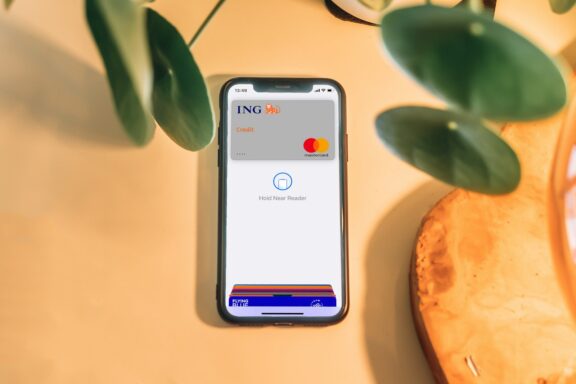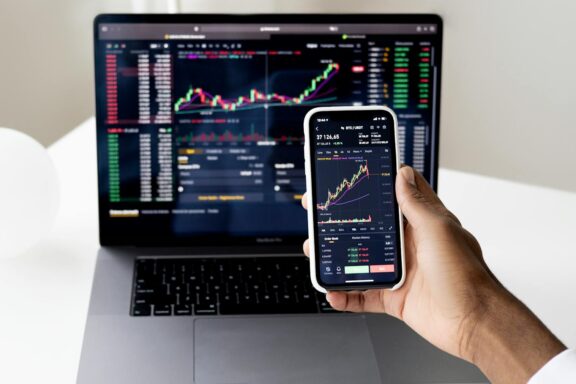DeFi (Decentralized Finance) and NFTs (Non-Fungible Tokens) represent two of the most innovative and rapidly evolving sectors in the blockchain and cryptocurrency ecosystem. This article delves into the intersection of DeFi and NFTs, exploring their fundamental concepts, the synergies between these technologies, and the opportunities they present for users and investors. We’ll also discuss the challenges and risks involved in their integration, highlight key case studies, and look at the emerging trends shaping the future of both DeFi and NFTs in the financial industry.
What is DeFi (Decentralized Finance)?
Understanding DeFi and its Core Features
DeFi, short for Decentralized Finance, is a movement within the blockchain space that aims to recreate traditional financial systems without intermediaries like banks or brokers. By using blockchain technology, DeFi allows for open, permissionless, and decentralized financial services that anyone can access globally.
Key DeFi features include decentralized exchanges (DEXs), DeFi lending platforms, and decentralized asset management services. The focus is on providing users with financial autonomy, allowing them to borrow, lend, trade, and earn interest without the need for a central authority.
What Are NFTs (Non-Fungible Tokens)?
NFTs: Defining Unique Digital Assets
NFTs or Non-Fungible Tokens are digital assets that represent ownership of a unique item, whether it’s a piece of art, music, virtual real estate, or even in-game collectibles. Unlike cryptocurrencies like Bitcoin or Ethereum, NFTs are unique and non-interchangeable, meaning each NFT has its own distinct value.
Key characteristics of NFTs include:
- Unique ownership: Each NFT is distinct, with a verifiable ownership history on the blockchain.
- Digital scarcity: NFTs can represent scarce assets, adding value based on rarity and demand.
- Wide range of use cases: NFTs can be used in art, gaming, virtual worlds, and more.
The Intersection of DeFi and NFTs: A New Era of Digital Finance
How DeFi and NFTs Work Together
The integration of DeFi and NFTs is a natural progression in the evolution of blockchain technologies. When combined, DeFi platforms can offer enhanced liquidity and fractionalized ownership for NFTs, opening up new possibilities for both creators and investors.
- Fractionalized NFT Ownership: DeFi protocols can break down high-value NFTs into smaller fractions, allowing multiple users to invest in a single NFT.
- NFT-backed Loans and Collateral: NFTs can be used as collateral on DeFi lending platforms, unlocking liquidity for NFT holders.
This DeFi-NFT integration creates a synergy where DeFi platforms provide essential liquidity and financial services, while NFTs offer unique, tradable digital assets.
Benefits of Combining DeFi and NFTs
Unlocking New Opportunities in the NFT Ecosystem
- Enhanced Liquidity for NFTs: DeFi platforms can enable greater liquidity for NFT assets by creating NFT liquidity pools or decentralized marketplaces. This makes it easier for NFT holders to sell or trade their assets, even when they might not have an immediate buyer.
- Tokenization of NFTs: DeFi platforms allow NFTs to be tokenized, turning them into tradable assets that can be bought, sold, or used as collateral. This tokenization opens up new financial opportunities for NFT owners and brings the digital art and collectibles markets closer to traditional financial systems.
- New Financial Products: The convergence of DeFi and NFTs enables the creation of innovative financial products like NFT-backed loans, DeFi staking rewards, and NFT yield farming.
Challenges and Risks in DeFi-NFT Integration
Security Concerns in DeFi-NFT Transactions
Security remains a major concern in both DeFi and NFT markets. With decentralized platforms, the risk of hacks, smart contract vulnerabilities, and fraud increases. DeFi-NFT transactions involve complex smart contracts, and a failure in security measures can lead to significant losses for users.
Regulatory Challenges for DeFi and NFTs
The lack of clear regulations around NFTs and DeFi platforms presents challenges for their integration. As decentralized systems operate outside the control of traditional financial institutions, regulators are struggling to enforce consumer protection, anti-money laundering, and tax compliance measures. Navigating these regulatory uncertainties remains a challenge for investors and developers in the DeFi-NFT space.
Case Studies: Successful DeFi-NFT Projects
Top Examples of DeFi-NFT Platforms
- Axie Infinity: This blockchain-based game combines NFTs with a DeFi ecosystem, allowing players to buy, sell, and trade NFT creatures while earning cryptocurrency rewards through gameplay.
- Uniswap: While primarily a DeFi decentralized exchange (DEX), Uniswap’s ecosystem has been experimenting with NFT liquidity pools, allowing users to trade NFTs using liquidity from DeFi protocols.
- Decentraland: A virtual world where users can buy, sell, and rent NFT-based virtual real estate using DeFi protocols for asset management and liquidity.
Lessons Learned from DeFi-NFT Integration
Successful projects demonstrate that a clear focus on user engagement, security, and scalability is crucial for the success of DeFi-NFT initiatives. Many early projects faced issues like scalability problems, lack of community support, and governance challenges. Future projects must learn from these lessons to create more sustainable and user-friendly ecosystems.
Future Trends and Innovations in DeFi and NFTs
Emerging Technologies in DeFi-NFT Integration
The future of DeFi and NFTs is promising, with technologies like Layer 2 solutions, cross-chain interoperability, and decentralized identity systems enhancing the usability and scalability of these platforms. These innovations will likely make DeFi-NFT ecosystems more accessible, efficient, and secure.
Impact of DeFi and NFTs on Traditional Finance
As DeFi and NFTs continue to mature, their disruptive potential could challenge traditional finance. Tokenization of real-world assets and NFT-backed financial products may shift the balance of power, making financial services more accessible, transparent, and decentralized.
Conclusion: The Future of DeFi and NFTs
The convergence of DeFi and NFTs is a game-changer, bringing new opportunities for digital asset ownership, decentralized finance, and financial innovation. As the DeFi-NFT ecosystem continues to evolve, it promises to reshape the way we interact with money, assets, and digital content. Staying informed about the trends, risks, and opportunities in this space will empower investors, creators, and users to thrive in the new era of blockchain-powered finance.
Frequently Asked Questions (FAQ)
1. What are some examples of DeFi-NFT integration?
Successful projects like Axie Infinity, Decentraland, and Uniswap showcase how NFTs and DeFi can be integrated to create innovative financial products and decentralized ecosystems.
2. How can individuals participate in DeFi-NFT projects?
To get involved, users can explore DeFi platforms that support NFT trading or NFT-backed lending. You can buy NFTs, stake them, or even use them as collateral for DeFi loans.
3. What security measures should be considered when engaging in DeFi-NFT transactions?
Ensure that platforms use strong smart contract audits, two-factor authentication (2FA), and employ security measures to protect your assets in DeFi-NFT transactions.
4. What role do smart contracts play in the intersection of DeFi and NFTs?
Smart contracts facilitate DeFi-NFT transactions, enabling NFT tokenization, fractional ownership, and securing loans backed by NFTs, all within decentralized networks.








No Comments